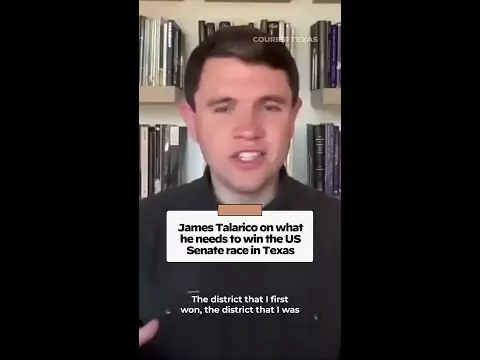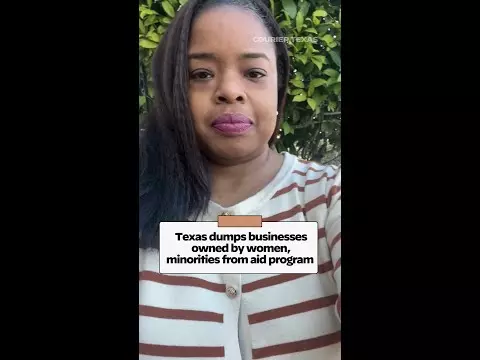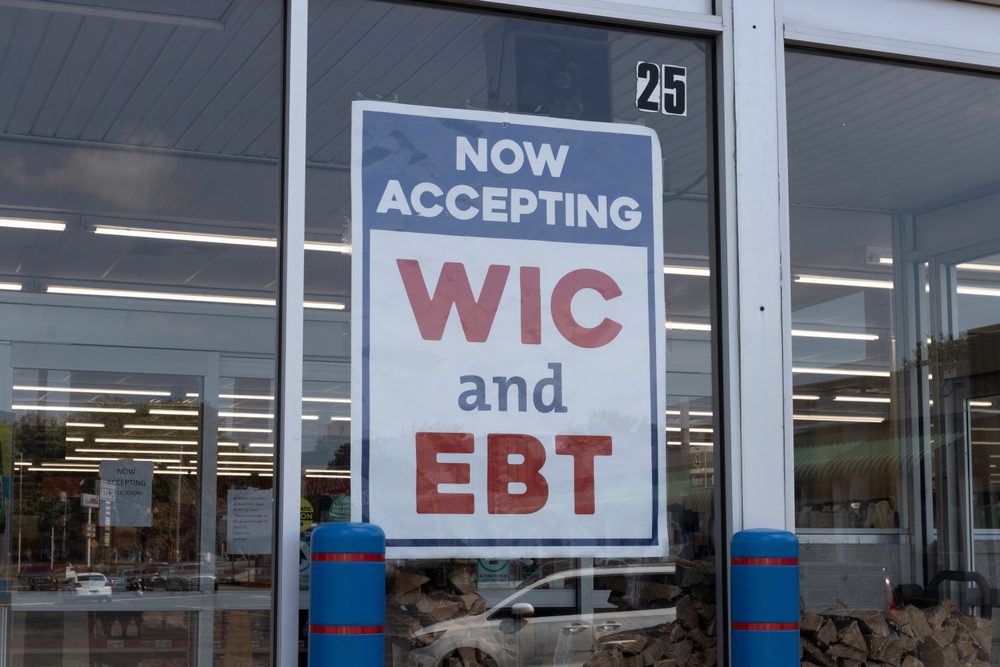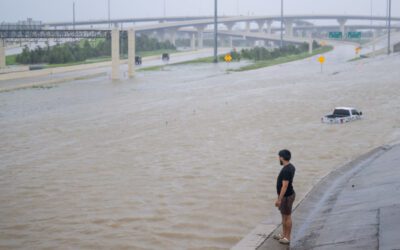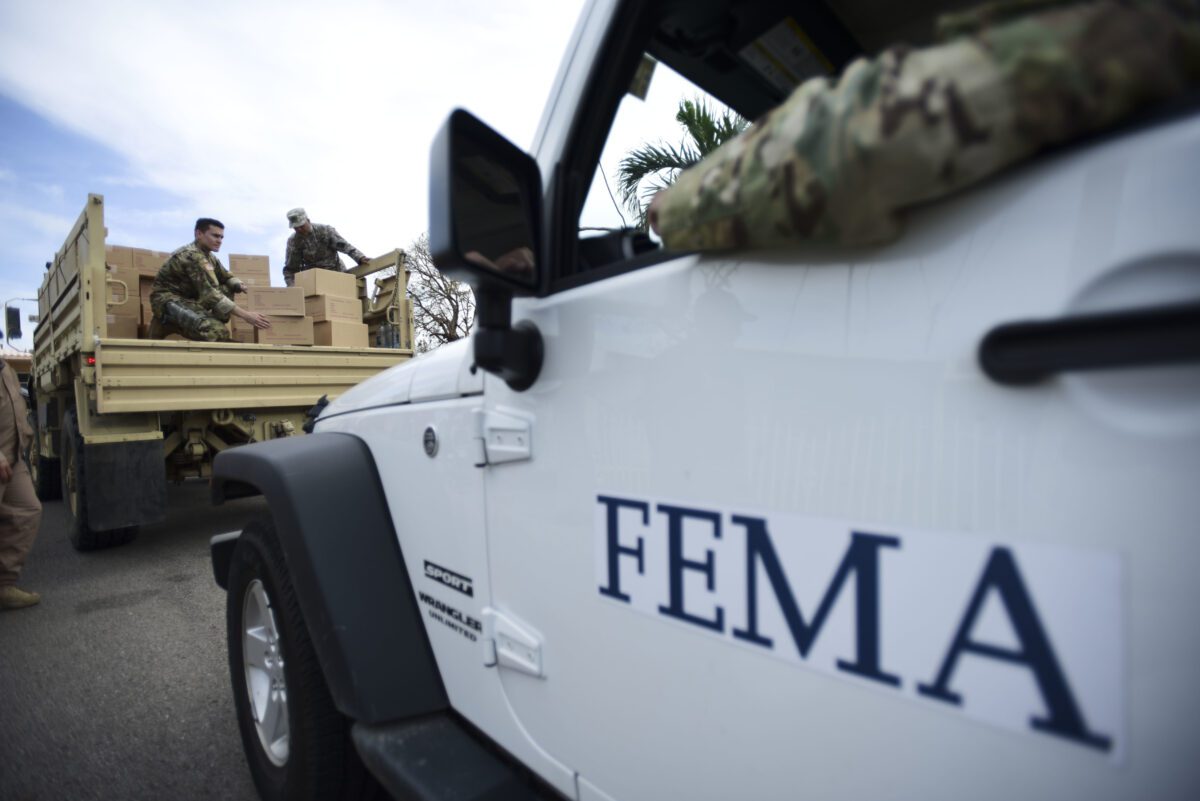
FILE - In this Oct. 5, 2017 file photo, Department of Homeland Security personnel deliver supplies to Santa Ana community residents in the aftermath of Hurricane Maria in Guayama, Puerto Rico. A government watchdog has found the Federal Emergency Management Agency wrongly released to a contractor the personal information of 2.3 million survivors of hurricanes Harvey, Irma and Maria and the California wildfires in 2017. (AP Photo/Carlos Giusti, File)
Those of us who have long lived in Texas won’t be surprised that our home state is the most at-risk in the nation for natural disasters.
Our communities have lived through the heartbreak and devastation of one disaster after another. In the last decade alone, Hurricane Harvey has ravaged our neighborhoods, Winter Storm Uri froze our state’s power grid and left millions without power in the middle of winter, various extreme weather outbreaks have cost Texans their lives, and the deadly Guadalupe River flooding killed so many this past July.
National attention to these disasters come in bursts, but the horrors left in their wake last long after the coverage starts to wane. While we are still reeling from deadly summer floods, so many others have yet to recover after Harvey hit Texas eight years ago.
It’s a sobering reminder of how our government’s disaster recovery systems fail us. But what’s even more devastating is that the fallout from these catastrophes is only going to get worse if we do not intervene.
The frequency and severity of natural disasters are steadily increasing—and the number of billion-dollar weather events facing Texas is on the rise. Meanwhile, the critical, life-saving measures meant to help us weather these crises are on the chopping block. President Donald Trump’s federal cuts have drastically reduced the capacity of FEMA, the US agency that helps communities prepare for, survive, and recover from disasters. He has touted his plans to eliminate the agency altogether.
Let’s be clear: FEMA’s inefficiencies have caused deep, long-lasting harm, and cutting disaster relief programs further will cost countless lives. What recovery systems like FEMA actually need are systematic reform. I know because I’ve helped Texans through the aftermath of these disasters and have seen the human toll of its red tape firsthand.
After Hurricane Harvey hit, I organized hundreds of volunteers to go door-to-door, knocking on the homes of seniors who were most vulnerable to its damage. As a Houston city councilmember, I witnessed a system meant to support Texans arbitrarily deny them help at every turn. Seniors whose lives had been upended by the hurricane received rejection after rejection from government programs and nonprofit housing services.
Even over a year after Harvey struck Texas, I met with Houston residents who were stuck living without electricity, and senior citizens who had no choice but to move in with their children after being denied FEMA assistance. I was forced to secure a New York Times story corroborating the devastation faced by one of my constituents before FEMA would approve financial support for rebuilding her battered home.
Every time I see news of yet another disaster approaching, I hear the words of one of those seniors: “I just want a safe place to live before I die.”
That was 84-year-old Mr. Brown, whose home I rebuilt after it was damaged by Hurricane Harvey in 2017 but was again destroyed by the winter storm in 2021. There are countless other Texans like him, whose lives were upended by natural disasters, who have gone years without the help they need to move forward, and who are suffering in silence to this day.
Strict provisions, overly complicated application forms, and inefficient programs continue to delay vital resources and timely policies from getting to our families and our neighbors during the most vulnerable moments of their lives.
Too often, by the time they get answers or funds from our federal agencies to support their recovery, they’ve been forced to leave their homes or spend their life savings trying to repair it. We can’t afford for this to be the reality of our disaster relief systems.
Texans desperately need better support navigating the complex process of securing government aid. Investing in case management training at agencies like FEMA will help people through complicated application requirements and prevent unwarranted and arbitrary denials. A one-stop Housing Solutions Center combining federal, state, and local resources would help people who have lost their homes secure temporary and long-term housing, as well as housing repair, instead neverending rejections.
Ahead of looming disasters, and there’s always another one, we not only need more effective, streamlined government support; we need it more quickly. Right now, Texans face life-altering delays in getting the logistical support, government assistance, resources and answers they need in the direct aftermath of natural disasters. Integrating the use of new technology and reforming outdated policies that hinder the distribution of recovery funds — like lengthy Congressional approval processes and overly complex state and federal requirements — are critical in getting help into the hands of those who need it in time.
Lives depend on the efficiency of our nation’s disaster relief systems. And I will continue to fight fiercely for these reforms to ensure that our government helps — not further harms — Texans in our greatest hours of need.





